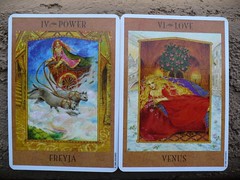What Does Outstanding ‘The Magician’ Tarot Card In Truth Suggest?
The chronicles of the Tarot is something that is buried by time. There are some references and academics that attach the origin of the Tarot with that of age-old Egypt, while more investigators and historians indicate that the Tarot shares heritage with older gypsy cultures. Still, there are additional scholars that associate an Italian inception to the Tarot cards, and it is considered that the Tarot Cards transformed into a mechanism of divination right around the 1400s. Since that time, hundreds of different decks demonstrate evolved and are currently in use. One of the largest leading decks being the Rider-Waite deck. Tarot cards are separated into one major arcana and five suits, namely: The Major Arcana, The Suit of Wands, The Suit of Coins, The Suit of Cups, and the Suit of Swords. The suits are separated as well. Their points’ worth and specific meanings are determined by being one of Oudlers/Trulls, Kings, Queens, Cavaliers, Jacks, or Others. Oudlers and Kings display the same value; the others from Queens to Jacks are worth one point less than their predecessors. Despite this, the English-speaking world pays more attention to the divinatory meanings of the cards, which will be tackled in the next area. Tarot card interpretations are always changing – and they have also differed significantly through time. Now, despite, there are common and general card meanings. For example, minor arcana cards generally present an astrological meaning that changes along with the seasons of the year. On another side of things, court cards talk of citizens and their nature. This nature concerns the physio-emotional traits of a human. More specifically, the determinants of a card’s meaning are the following: Card Number, primary Number,
